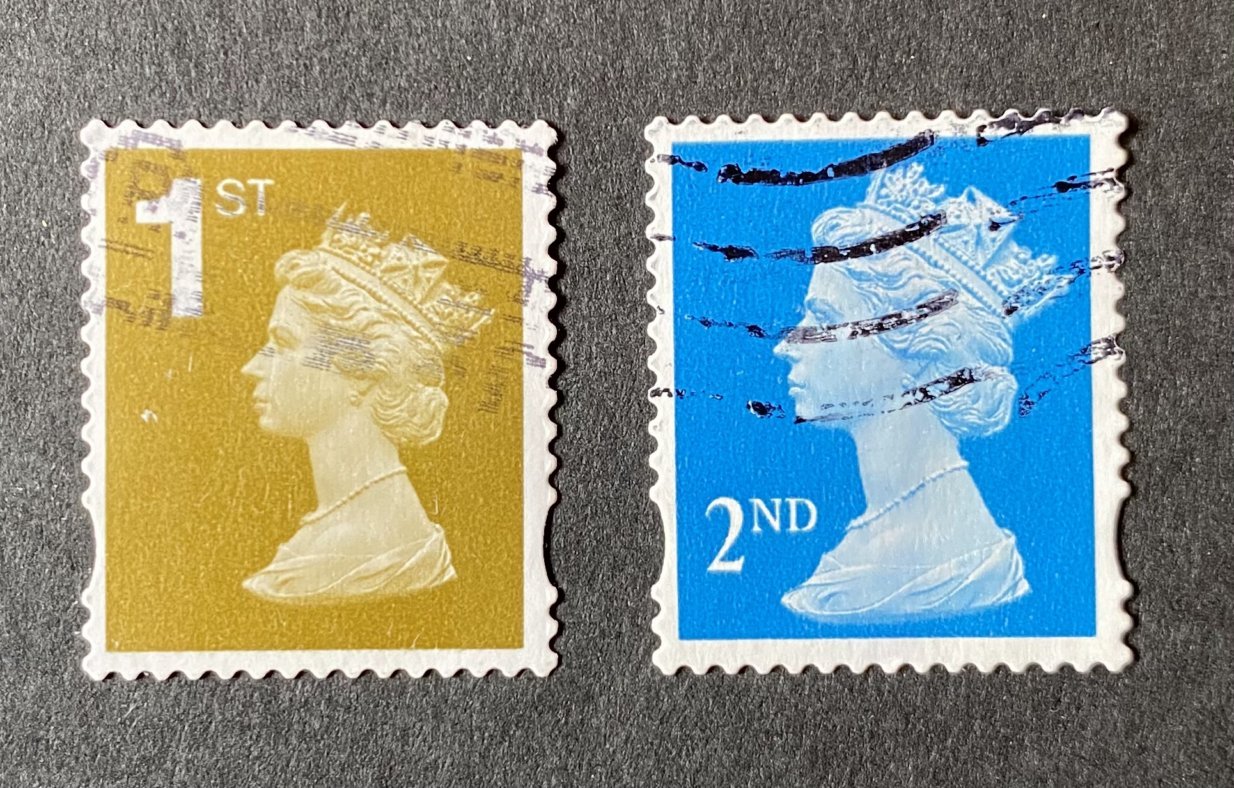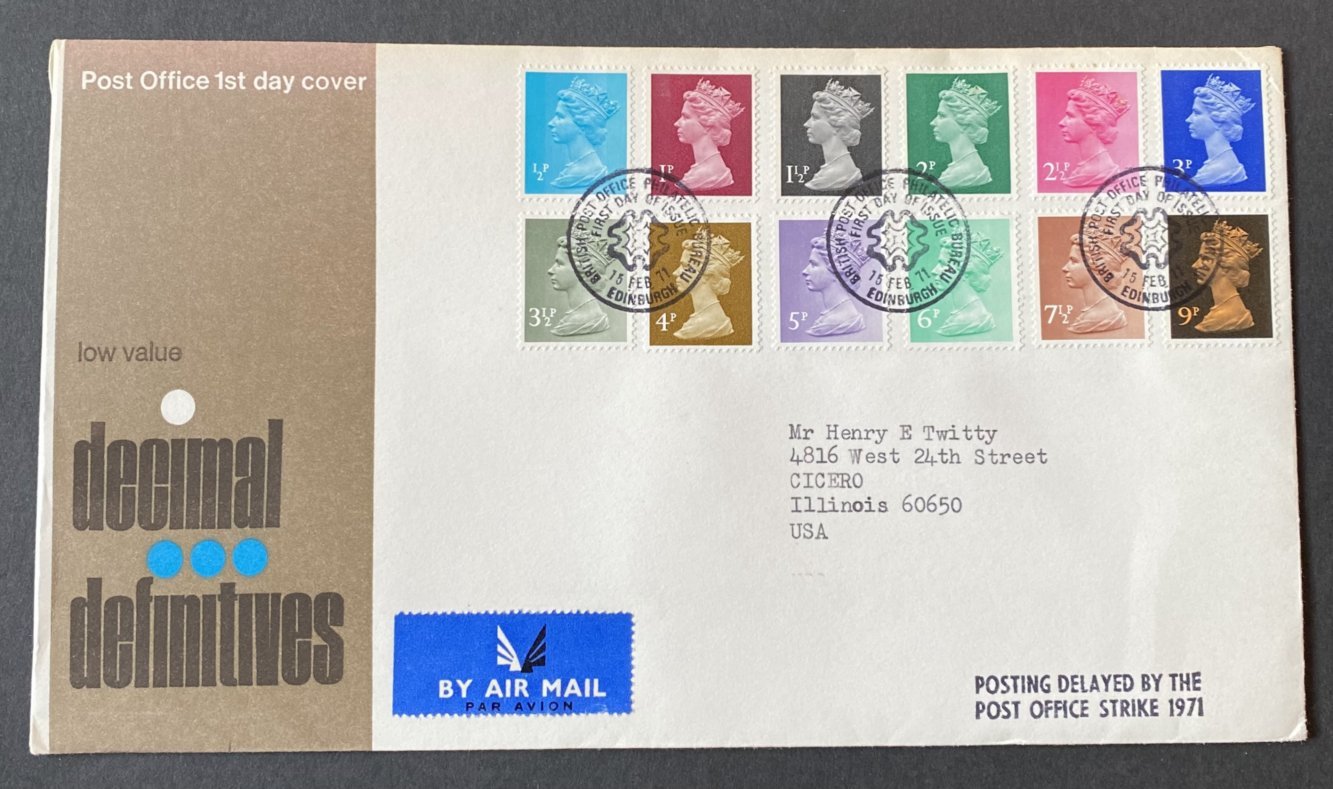The Machin Era 1967-2022
The death of Queen Elizabeth II on September 8, 2022 marks the end of a philatelic era. The long running series of British definitive stamps, known as Machins, will be replaced by new stamps depicting King Charles III.
What Are Machins?
The Machins definitive stamps are based on a cameo of Queen Elizabeth II that was designed by Sir Arnold Machin, 1911-1999. Sir Arnold was a modeler and sculptor whose images of the Queen also appeared on coins. The basic design of the Machin definitive stamps, consisting of a cameo of the Queen and the denomination of the stamp, are considered a classic example of modern design (figure 1). The first Machin definitive stamps were issued in 1967 and the basic design was retained throughout the remainder of the Queen’s reign. On several occasions the Queen was approached with ideas for replacing the Machin design, but she nixed them every time in favor of retaining the Machins.
Figure 1
Four pence stamp from first Machin series issued 5-June-1967.
The Machin Era
Beginning with the first issuance of Machins on June 5, 1967, the long production has led to over 3,000 collectable varieties. This is the result of:
1. Stamp format including sheet, booklet, and coil
2. Color changes
3. Perforation varieties (figure 2)
Figure 2 - Perforation Types
Normal perforations (left) and elliptical perforations (right). Elliptical perforations were put in use in 1992 as an anti-forgery preventive.
4. Printing methods including engraving, lithography, and photogravure
5. Security features
6. A re-engraved image of the Queen
7. 150th Anniversary of the introduction of Penny Post (figure 3)
Figure 3 - 150th Anniversary of Penny Post
In 1990 five Machins were issued with “double heads,” the normal QEII cameo and the cameo of Queen Victoria that appeared on the first penny post stamp in 1840.
8. No value indicated (NVI) (Figure 4)
Figure 4 No value indicated (NVI)
No value indicated, (NVI) Machins do not have a denomination, rather the class of mail is inscribed on the stamp. Such stamps are valid for that service regardless of the current rate.
9. Service inscriptions
10. Changes in the physical size of the stamps
11. Luminescent varieties
12. Adoption of decimal currency (figure 5)
Figure 5 - Adoption of Decimal Currency
Decimal currency, 100 pence = 1 pound, was adopted by the United Kingdom on 15-February-1971. Due to a postal strike on that date, new decimal denomination Machins were not available to the public until the resumption of postal service on 8-March-1971.
13. Regional issues for Isle of Man, Northern Ireland, Scotland, and Wales
Figure 6 - Regional Machins
Regional Machins incorporate a symbol of the region, Scotland (left), Wales (right),
14. Ever increasing postal rates!
Learn More About the Machins
The good news for collectors is that the vast majority of Machins are quite affordable, the challenge is the hunt for all the varieties! Listed below are several free resources for learning more about the Machin stamps and postal rates when they were in use.
The Great Britain Machins website, https://adminware.ca/machin/, created by Robin Harris, is a tremendous free resource for all things related to Machins! The site is easy to navigate and fully searchable by stamp. Individual stamp listings include the varieties for the stamp. Best of all is the downloadable Simplifying the Machins, https://adminware.ca/machin/Index.php?Simply101. This booklet covers the numerous Machin varieties in clear text accompanied by excellent illustrations. Last but not least, the site also has a basic Machin album for free download and offers more advanced Machin albums for sale.
For postal historians, the Great Britain Philatelic Society website, https://www.gbps.org.uk/, provides tables of all British postal rates including those used during the Machin Era.
Published 18-September-2022







